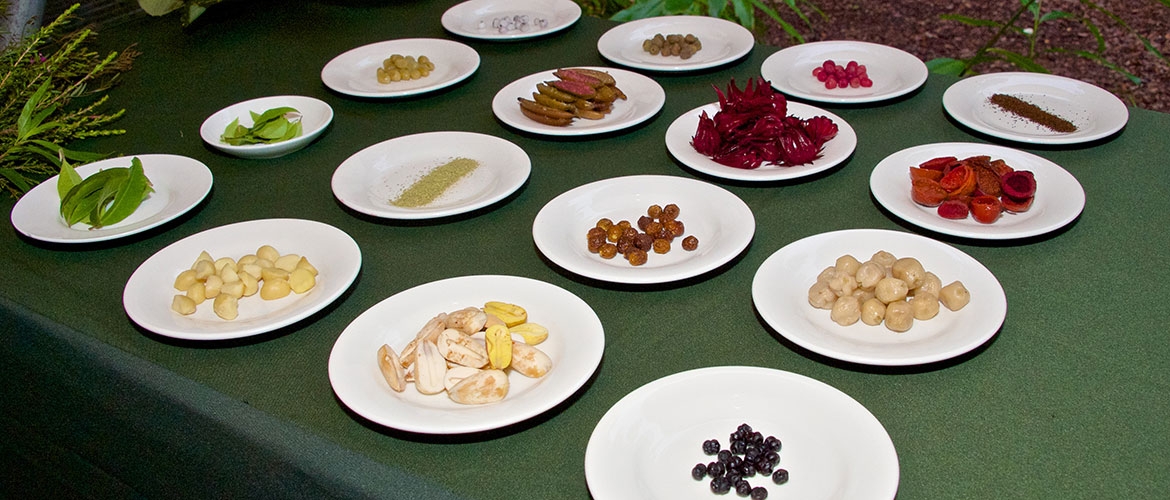Geebung (Persoonia virgata) is a small tree or shrub with edible fruits 7-20mm long. Ripe fruits are found on the ground under the geebung. The fruits are pale green with a large seed inside and a stalk-like style at the tip. While the fruit is on the tree it is not worth eating.
Hop bush (Dodonea triquetra), an under storey shrub, is one of 60 species of hop bush in Australia and produces bitter tasting fruits that look like hops. The pods have three flattened wings extending from a central core. The early European settlers used the fruits to prepare beer of reputable quality. Aborigines chewed the leaves to relieve toothache and applied them to stings, which suggests a pain killing effect.
Blueberry ash (Elaeocarpus reticulatus). The small fruits of this shrub, 5mm in diameter, contain a large seed. When the seed is firm it is astringent and unpleasant to eat; as the seed softens the fruit develops a floury taste. The most flavoursome fruits are wrinkled and hang from the underside of the tree limbs. If the fruit is bright blue it can be eaten raw. This plant can be found in abundance. The best time to look for fruit is between May and October.
Pigface (Carpobrotus glaucescens). This unmistakable plant has very fleshy leaves and bright pink flowers and can be found growing on foredunes close to the beach. The tasty fruit turns a deep red or purple when ripe. With a taste like salty strawberries this fruit was highly sought after by Aboriginal people - the edible portion is squeezed from the casing of the fruit. The leaves can also be eaten but have a revolting taste. Juice from these leaves has been used to take the sting out of midge bites.
Orange Mangrove (Bruguiera gymnorhiza) produces cigar shaped fruits that float vertically in the water. The seed was baked, pounded, rinsed several times in water, and then the excess water was squeezed from the pulp before it was eaten.
Banksias (Banksia spp.) Banksias are woody shrubs or trees with characteristically large, coarse and "bottle brush" blossoms. Flower colours may be yellow, green, brown, mauve, pink or purplish and after they wither a large cone remains with woody follicles containing the winged seeds. The diet of Aboriginal people was often bland and sugar yielding foods, such as the nectar from the Banksia flower were highly regarded. The sweet beads of nectar were either sucked from the blossom or dipped into water to make a flavoursome cordial. Nectar is best collected early in the morning before it is evaporated by the sun or diminished by the birds.

